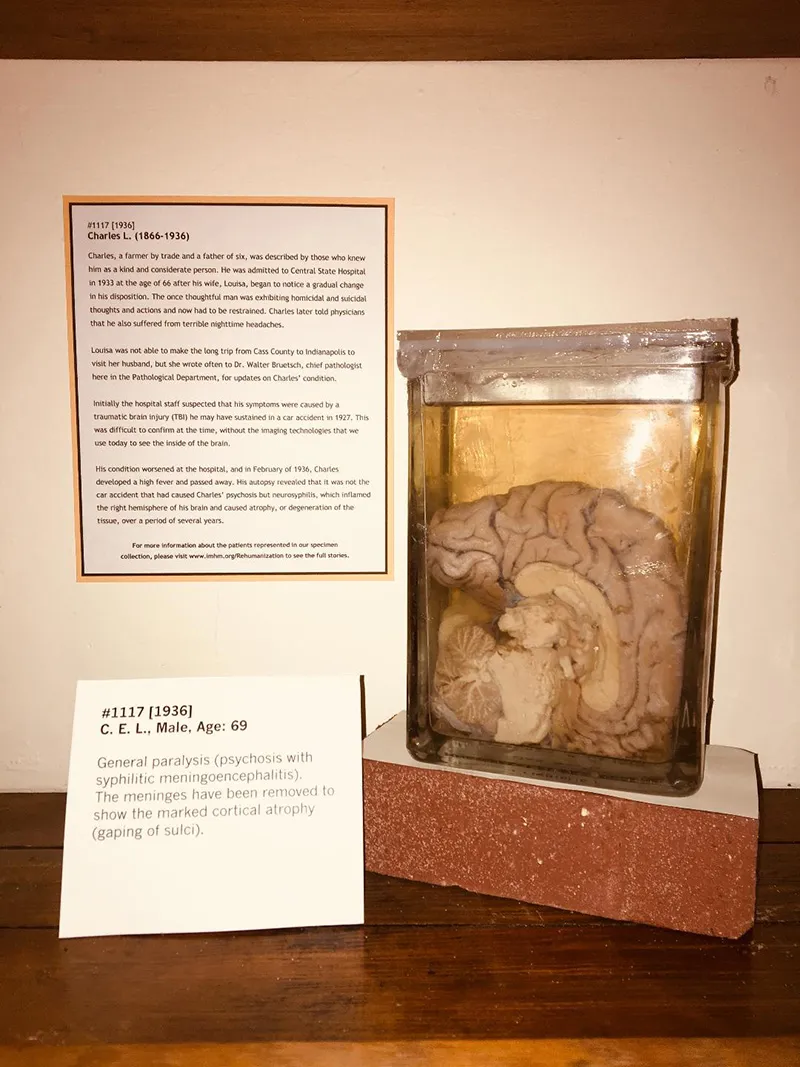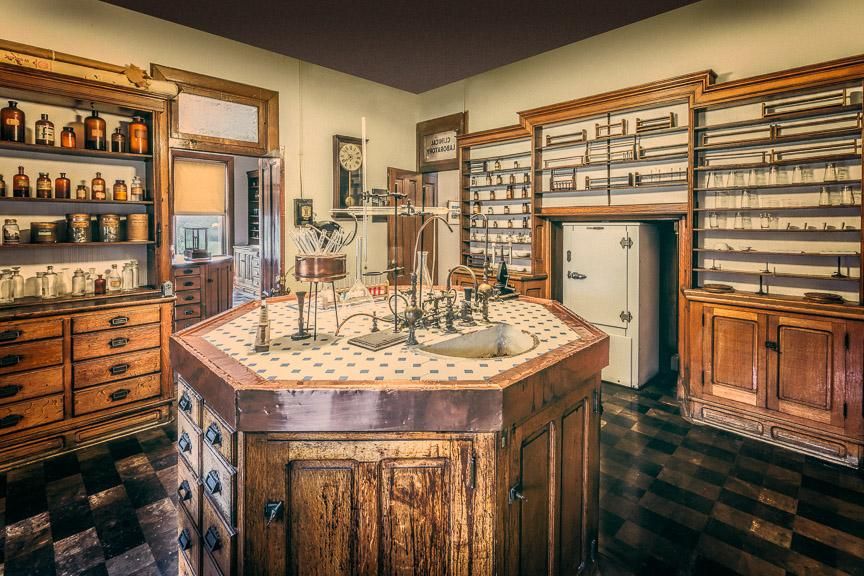How One Museum Is Giving a Voice to Former Mental Health Patients
The Indiana Medical History Museum is telling the human stories behind its collection of brains, tumors and other biological remains
/https://tf-cmsv2-smithsonianmag-media.s3.amazonaws.com/filer/8f/89/8f8935af-9f97-4712-957a-5279bc3078fc/_b0a1021-edit__courtesy_of_tom_mueller_photography.jpg)
Preserved inside a glass container filled with a solution of formaldehyde, the chunk of gray matter floats effortlessly, as though suspended in time. For more than a half century, the specimen has been housed inside a historic redbrick building in western Indianapolis, a former mental hospital that is now home to the Indiana Medical History Museum. Other than a handful of medical records, including a handwritten autopsy report, little was known about the brain—or the man to whom it once belonged. However, thanks to a new initiative by the museum, visitors will soon get the opportunity to learn more about the life of the former patient and why he was admitted to the mental hospital in the first place.
Much like putting together a jigsaw puzzle, museum staffers have been scouring medical charts, autopsy reports, hospital admission papers, newspaper clippings, city directories and other paperwork in an effort to better understand the stories behind its collection of specimens and the patients they once belonged to in what was formerly the Pathological Department of Central State Hospital. (When it opened in 1848, it was known as the Indiana Hospital for the Insane.) Called “Rehumanizing the Specimens,” the project began in 2015 and has continued to gain momentum with the help of local historians and archivists from the Indiana State Archives, Indiana University School of Medicine students and pathologists.
“The goal is to give people back a voice that they no longer have,” says Sarah Halter, executive director of the Indiana Medical History Museum. “The way you display an object, the types of information that you share with visitors about it and the stories that you tell, all of those things have an impact on the way visitors perceive those objects, or in this case, human remains. [These things] impact the message they take away from it. We want to make sure that the way we’re displaying and interpreting the specimens reinforces their humanity and gives visitors the sense that they were real people just like all of us.”

On July 9, the museum will unveil the project as a series of detailed labels that will reside alongside each specimen. Because the museum is housed inside the old pathology building, entering the brick building is like stepping back in time with many of the labs and offices left exactly the way they were when they were operational decades ago. So far the museum has completed dozens of labels for its extensive collection, which includes sections of brains, hearts, tumors and other biological remains. In addition to the physical labels, the museum is creating a supplemental section on its website that will include even more information about each specimen and details about the former patient, such as where they grew up, what they did for a living, why they were admitted to the hospital and how they died.
Up until now nearly all of the museum’s objects on view to visitors were labeled using very clinical descriptions and terminology written by pathologists back when the building was still a fully operational mental health facility. (It wouldn’t become a museum until 1971.) They were written using a lot of medical jargon and stuck to a script focused on the patient's medical condition, avoiding any biographical details. For example, one old label includes details of proteins found in the specimen's spinal fluid. The new labels go one step further and explain more about the actual patients and their histories. For that same specimen, the new label reveals that it was from a soldier wounded at war. All told, the project only skims the surface of the museum’s many holdings, which include thousands of tissue blocks, undeveloped glass plate photos, autopsy reports, medical books and other pieces of literature.
“The autopsy records we have at the museum are just a starting point for us,” Halter says. “That’s where we get information about what caused their death and how long they had been at the hospital. But we’re also working with medical students and pathologists who are going back and looking at the tissue blocks and researching whether our understanding of a particular disease or injury has changed and what might be different about the diagnosis, prognosis or treatment today. There were diseases that you might have been institutionalized for back in 1900 that you wouldn’t be today thanks to advancements in medicine. Their research also helps historians at the museum better understand what the impact of the disease would’ve been for an individual back then.”

One specimen in particular that Halter offers as an example is that of a man named Burton. (The museum has opted to only include patients’ first names and last initials on the labels for privacy’s sake.) Burton suffered a traumatic brain injury when a bullet punctured his left frontal lobe during the Spanish-American War. After the war, the veteran returned to his work as a farmer and started a family, but over the following decades he began exhibiting a decline in executive functioning, and in his late 60s his family admitted him to the hospital. By piecing together his medical records and hospital admission interviews, the museum was able to get a better understanding of the man Burton was both before and after his injury, details that go far beyond what they previously knew from just the bullet-pierced portion of brain floating in a formalin-filled jar in the museum.
“We want visitors to realize that these were real people,” Halter says. “We’re all impacted by mental illness whether directly or indirectly. The specimens are more than just teaching aids. We see a lot of possibilities to use this information that we’re collecting. We might have some impact in the community through telling these stories, so we’re continuing to dig and look for more information so that we can add narratives to the collection as we go.”